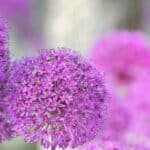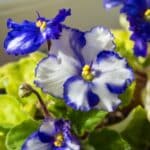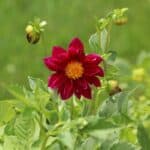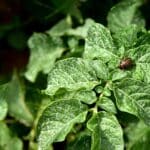From early spring to early fall, Gardenia (Gardenia jasminoides) is most renowned for its intoxicating perfume and gorgeous waxy blossoms. These blooming shrubs attract pollinators such as bees and hummingbirds to your garden and are excellent for constructing borders or barriers.
Gardenias look incredibly charming if you pair them with other plants like sweet marjoram, hydrangeas, sage, marigolds, or camellias.
Let’s take a look at some of the greatest gardenia companion plants you may put in your vegetable garden if you want a more attractive yet easy-to-maintain garden.
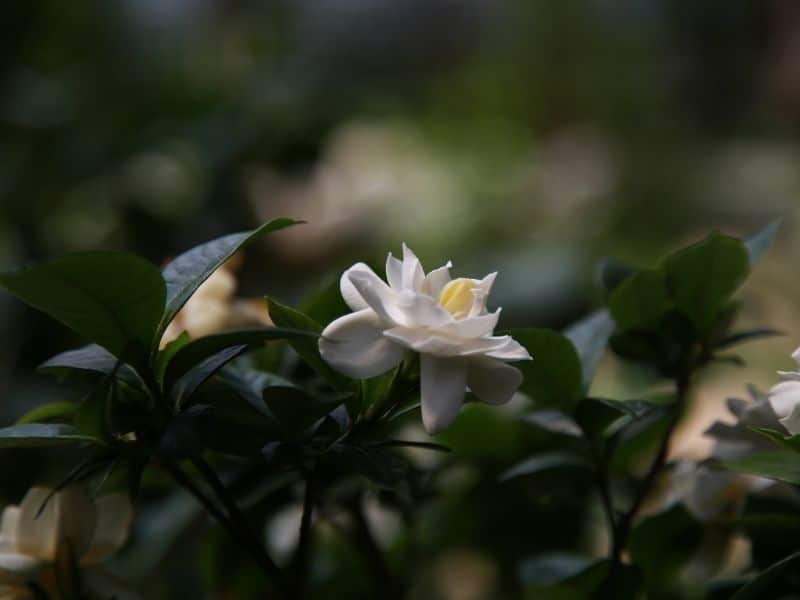
What To Plant with Gardenias
Gardenias will develop into enormous, luxuriant bushes if planted in a dappled shadow location that receives some early morning sun. They are happiest in acidic soils and prefer well-drained soil that is kept nice and cool.
If you want to select companion plants that will flourish next to gardenias, then it is best to choose plants with similar growing conditions.
Let’s look at some beautiful gardenia companions who love the dappled shade and cool, moist soil conditions.
Sweet Majoram
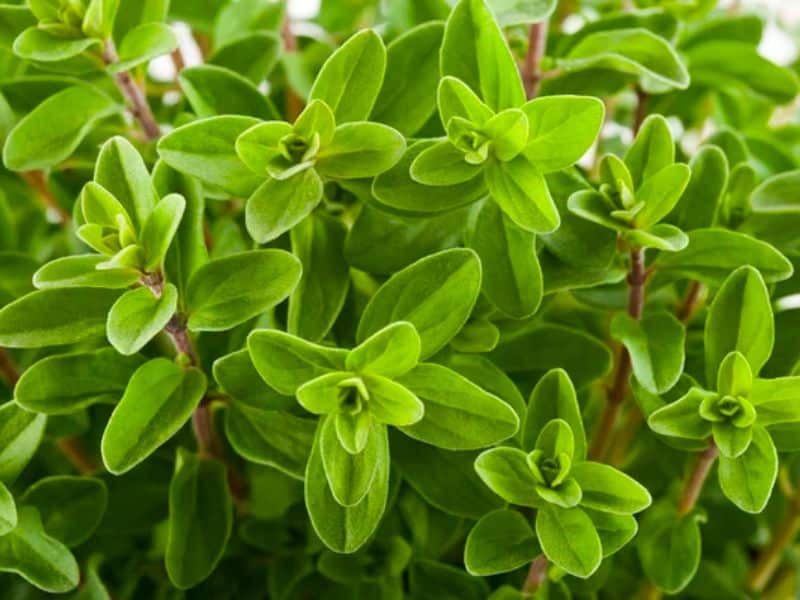
Sweet marjoram (origanum majorana) is a cold-sensitive perennial herb that can be useful as a ground cover to keep the soil around your gardenias nice and cool. This aromatic plant also repels gardenia pests like as scale insects, spider mites, and aphids.
These plants grow well in well-drained, acidic soil, and while they do prefer full sun, they can survive in partial shade with lots of indirect light. The herb shouldn’t be watered too often. The soil around it should be allowed to dry out about an inch before rewatering, or the herb could develop root problems.
This companion plant will only grow up to 24 inches tall, and the best way to pair it with new hybrid gardenias is by positioning it around the base of your shrub, where it can receive plenty of light.
Hydrangea

Hydrangeas (Hydrangea macrophylla) are colorful flowering plants that can add visual appeal to your garden when they produce flowers from late spring to early summer. There are many different varieties of hydrangeas in many flower colors, like white, blue, purple, and pink. The color of these flowers can also be altered by adjusting the pH level of the acidic soil.
These rich green leaf companion plants like moderate shade with a little light morning sun. While they grow well in the shade, they shouldn’t be established in the deep shade because this can cause mildew growth. The flowering plants will grow in any soil that drains properly and should be deeply watered at least 3 times a week.
Hydrangeas and gardenias are both shrub plants that can grow rather tall. The best way to combine them in your garden is next to one another, so all those pretty flowers will be nice and visible. Alternatively, you can grow the hydrangeas in the back and keep the gardenia shrubs a little bit shorter in front of your hydrangeas so these shrubs can cover up the base of the hydrangeas.
Sage
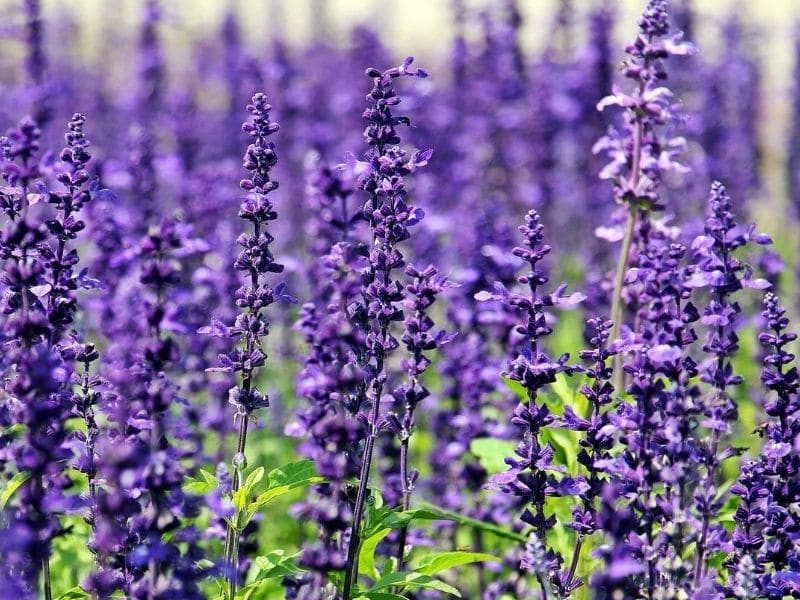
Common sage (Salvia officinalis) are also good companion plants for gardenias because their tall purple flower stalks will create lots of contrast in front of the dark green foliage and vivid white flowers of these shrubs. The silvery foliage of sage will also add lots of difference and light around the base of the dark green shrubs.
These companion plants are also helpful for repelling all sorts of pests like snails, beetles, and other harmful insects, but it also attract beneficial pollinators.
This herb loves full sun positions, but it can also develop well in dappled shade, although it might produce fewer flowers in a shaded place. The herb must be established in well-drained soil and is more drought-tolerant than gardenias. These plants also grow very well in containers.
The best way to pair these two plants is by growing sage in the front, where the silvery foliage can have a striking impact. Gardeners love adding lots of sage to the gardenia beds to repel pests.
Signet Marigold
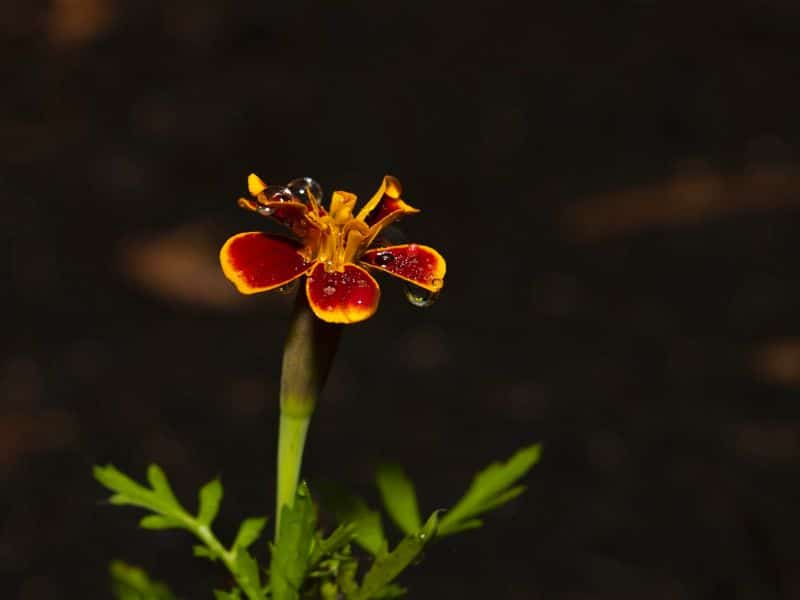
Signet marigold (Tagetes tenuifolia) is a charming companion plant to pair in front of the evergreen shrubs because this herbaceous plant’s yellow or orange flowers will complement the white gardenia flowers very well. This single-flower variety of marigolds is also helpful for repelling common pests like aphids.
These bright flowers prefer warm sunlight and won’t produce as many flowers if you grow them in the shade. The flowers are vulnerable to root rot and should be planted in well-drained soil, and they can be drought tolerant.
When pairing the plant with gardenias, you should be careful to position these short flowers in front of your gardenia hedges where they can receive more direct sunlight.
Camellias
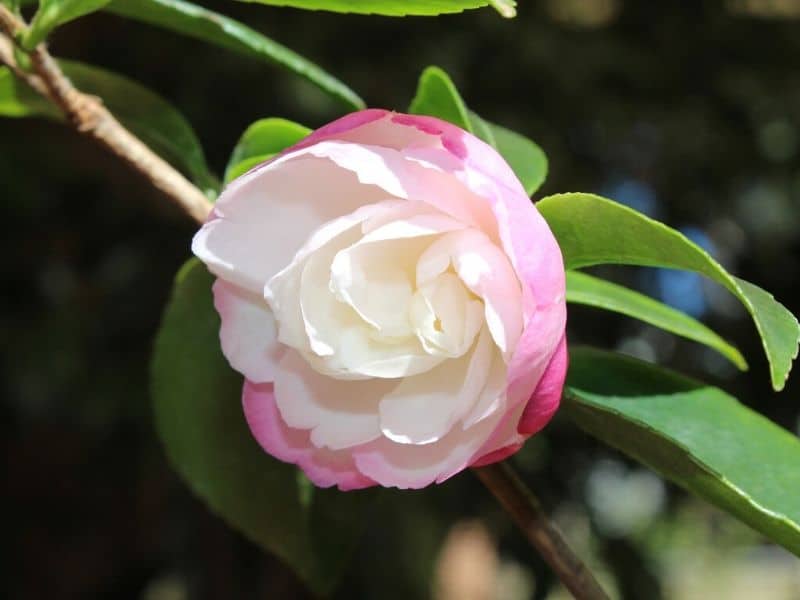
Camellias (Camellia sasanqua) are excellent companion plants since they have comparable nutritional and water requirements as gardenias and flourish in the same soil conditions. The blooming plant also has a much longer bloom season and will bring color to your yard long after the gardenias have finished blossoming.
There are quite a few different camellia species that come in shades like pink, red, and white. These flowers also have different bloom designs.
These shrubby trees can grow up to 25 feet tall but mostly only reach about 12 feet. Gardenias are typically shorter, with a maximum height of 8 feet tall. It is usually best to plant gardenias in the front or beside your camellias and to keep both plants trimmed.
What NOT to Plant with Gardenias
Many great gardenia planting companions can help you create a wonderful-looking garden. But gardenia plants don’t go well with all plant species.
These flowers are primarily grown for their fragrance. As a result, other strongly fragrant plants should be avoided since they might overshadow the enticing perfume of gardenias. Fragrant plants such as lavender and jasmine can provide overpowering aromas that can hide the exquisite fragrance of gardenias.
It is also better to choose plants that prefer dappled shade since sun-loving plants like coneflowers and sedum won’t grow well or produce flowers in these shaded areas.
Landscaping Ideas for Gardenias and Companions
Now that you know a bit more about other acid-loving plants that will grow well with gardenias, it is time to take a look at some creative ways to pair these plant species in your garden.
Use as Patio Accents
Hybrid gardenias can be planted indoors if you position them close to a window that receives plenty of indirect light. You can also combine them with other indoor florals like hydrangeas and create interiors with a pleasing aesthetic and a powerful scent of florals.
Use as Houseplants
Hybrid gardenias can be planted indoors as long as you position them close to a window that receives plenty of indirect light. You can also combine them with other indoor florals like hydrangeas and create interiors with a pleasing aesthetic and a very strong scent of florals.
Use as Mixed Borders or Hedges
The gardenia plant can be paired with other bushy plants like sage, camellias, or hydrangeas to create showy hedges or borders. These living hedges or fences can conceal unsightly areas in your garden or create more private spaces. The shrubs can also be paired with shorter florals like signet marigolds to create a solid bank of color.
Final Thoughts
Gardenias are beautiful plants to add to your garden to create spaces that look and smell terrific. They can also be combined with other good companions like hydrangeas, camellias, signet marigolds, sage, sweet marjoram, and ferns or snapdragons to create visually appealing garden spaces.
We hope this guide helped you choose plants that will grow well with gardenias and that you got some creative ideas for more striking gardenia bushes.
Learn more about Gardenia symbolism to see why people love this flower!


